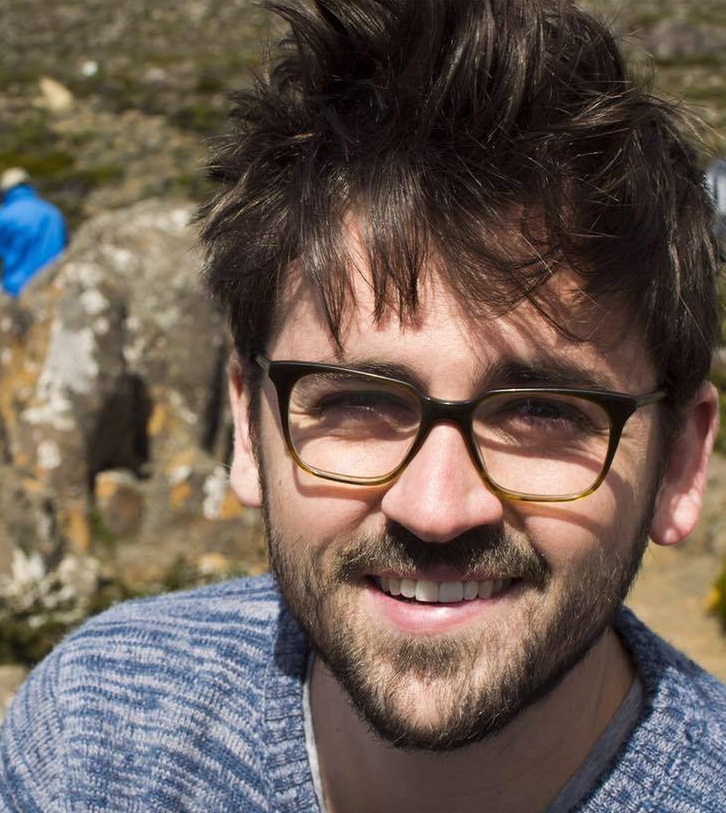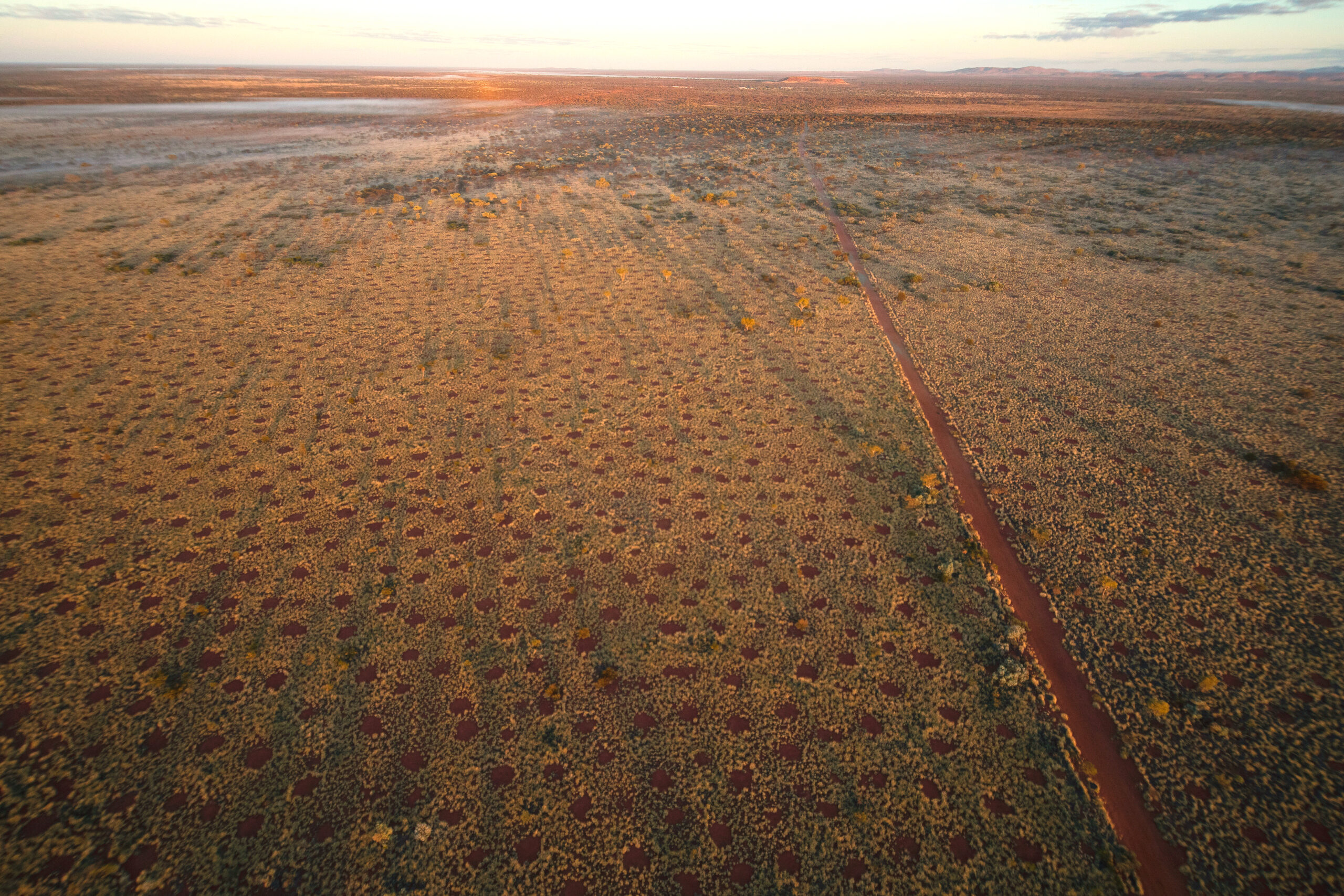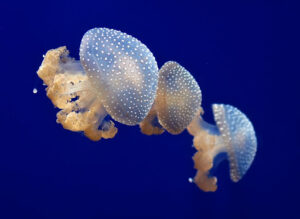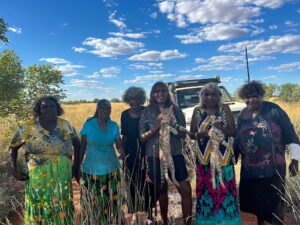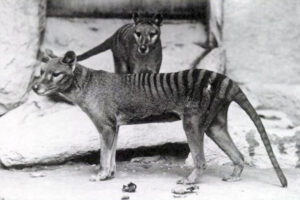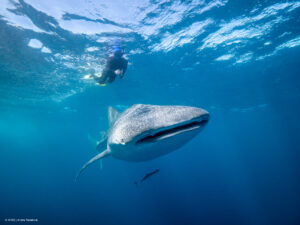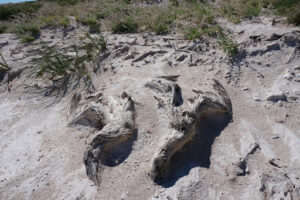Fairy circles are round patches of bare earth surrounded by grass. They occur in the desert near Newman, Western Australia, and in Namibia.
For decades, there has been global scientific debate about the cause of this peculiar phenomenon.
In 2016, an international team of scientists concluded they were formed by plants competing for water and nutrients.
The researchers pointed to mathematician Alan Turing’s theory of pattern formation. This theory uses maths to explain patterns that arise in nature such as cloud formations and sand ripples.
But new research by a cross-cultural team near Newman offers a new theory – they are ‘pavements’ occupied by termites.
Cultural collaboration
The new study was led by Dr Fiona Walsh, an award-winning ethno-ecologist who has worked with Aboriginal people for 35 years.
What’s an ethno-ecologist?
“An ethno-ecologist is someone who understands interactions between elements of nature and is interested in the connections between people, plants and animals and their ecosystem,” says Fiona.
Fiona has studied bush food, bush medicine, fire management and concepts of land and Country through the lenses of zoology, botany and anthropology.
Learning alongside Aboriginal people is key to Fiona’s approach to ethno-ecology.
sharing stories
Fiona’s new study incorporated unique data collection methods.
As well as field observations and measurements, her team considered qualitative data, including Aboriginal oral narratives and art.
The team included elders from the Martu people of the Western Desert area (near Newman) and the Warlpiri people near Newhaven in the Northern Territory.
Aboriginal people have long recognised the so-called fairy circles as linyji or mingkirri.
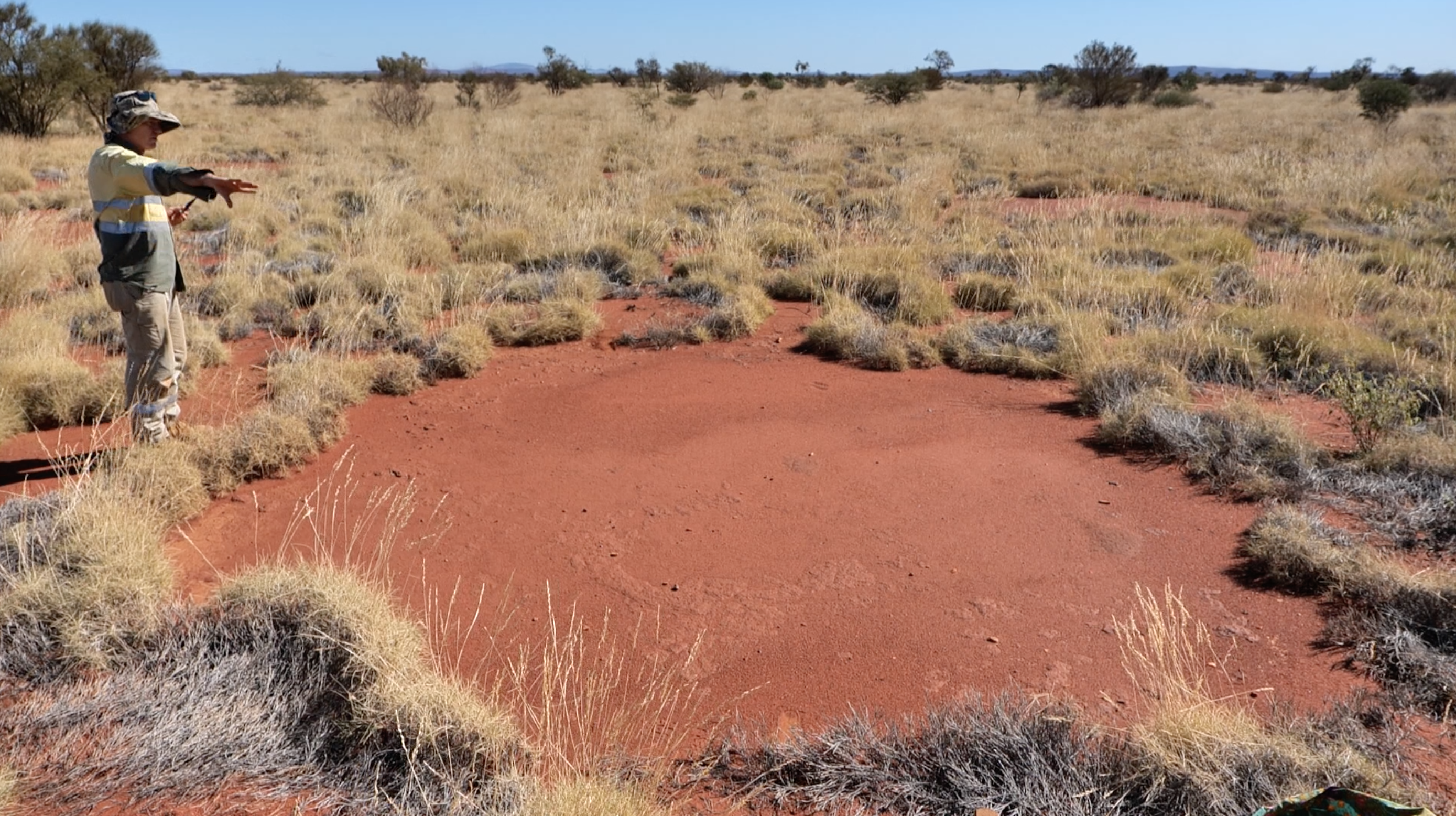
Co-author Peter Kendrick indicates a linyji (termite pavement) on Nyiyaparli country | Fiona Walsh
“Martu people used the pavements (fairy circles) as working surfaces for processing seeds and other materials, like bush glue and tobacco,” says Fiona.
“They’ve also known them as the homes of termites.”
digging in
The qualitative data led the team to sample the fairy circles’ soil.
“We dug 60 trenches on 23 pavements,” says Fiona.
“100% of the trenches had termite structures and 40% had live termites running around.”
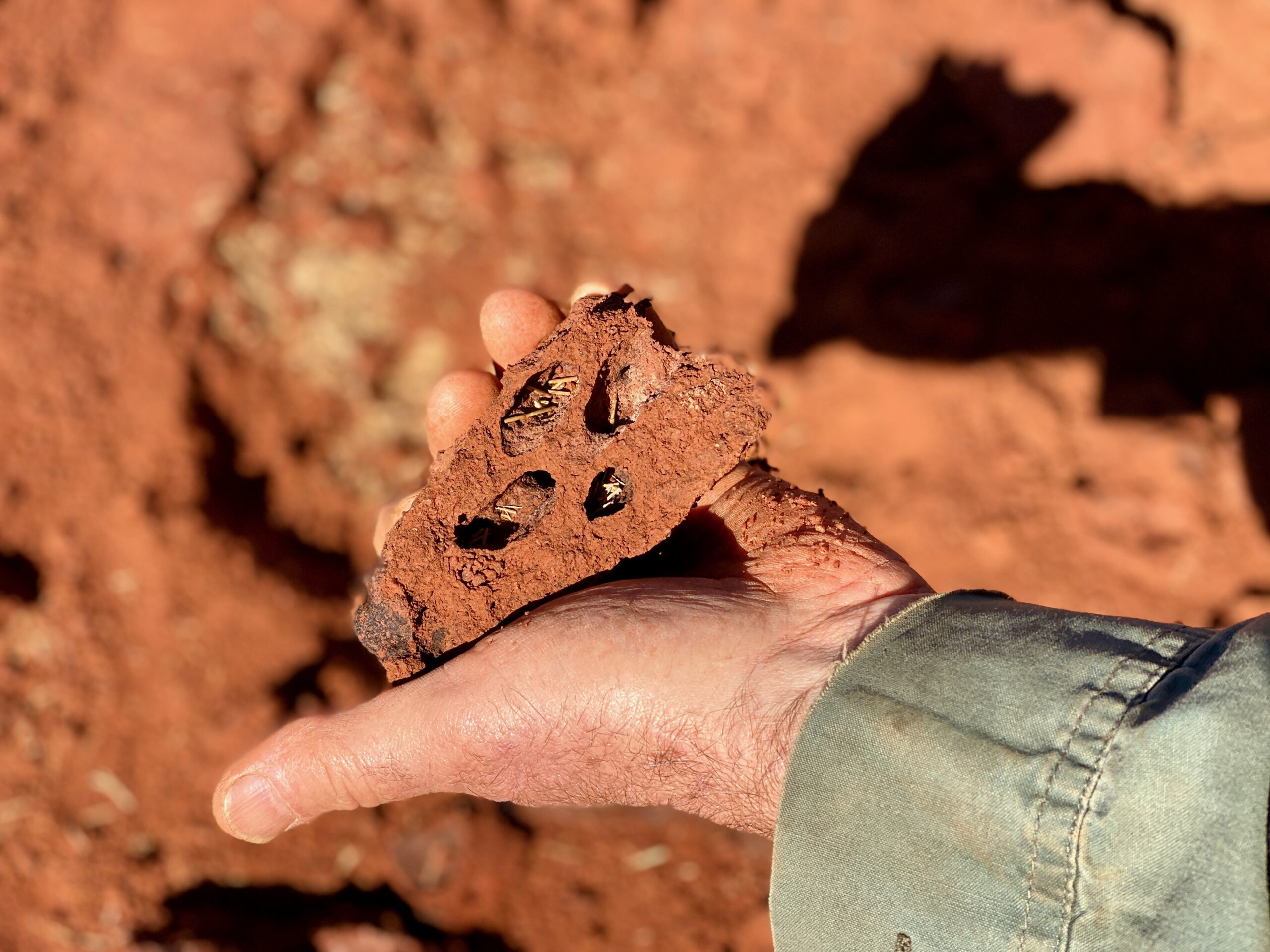
As Aboriginal people foretold, in the pavements, we find termite chambers | Fiona Walsh
Fiona says they can’t confirm whether termites created the fairy circles because they may have been formed thousands of years ago.
But her team are confident the pavements are occupied and maintained by termites.
COMPLEXITY ON COUNTRY
At first glance, the team’s research method seems pretty simple: for a more complete understanding, bring in a broader range of knowledge and data. But it had its challenges.
“As researchers interpreting Aboriginal knowledge, we still have to be cautious and systematic,” says Fiona.
“Not all the information always fits together, and nor should it have to when we’re learning from two very different knowledge systems.”
“We’ve got several wide spreadsheets that hold and organise the knowledge that’s sourced from Aboriginal dictionaries and artworks.
“In some ways, it’s more complex than just direct observation.”
RIDDLES REMAIN
There is still much to understand about fairy circles or linyji. For example, why do they hold water after heavy rain?
This phenomenon is referenced in qualitative ethnographic research from Martu and Warlpiri collaborators.
Martu interpreter and study co-author Purungu Desmond Taylor remembers a story about the mulyamiji (great desert skink) birthing its young in the shallow water that pools in the linyji.
“We wouldn’t have thought to investigate the water story were it not for what Aboriginal people in our team and Country men and women share,” says Fiona.
“In 2022, we tested the fairy circles and found they do hold water as Aboriginal people had said.”
“That’s a radical new finding for desert science ecology.”
“It means that insects, birds and other animals have greater access to standing water than ecologists have previously recognised.”
Fiona says Aboriginal people’s knowledge of the landscape is critical to improving ecosystem management and understanding and caring for Australia’s desert.


